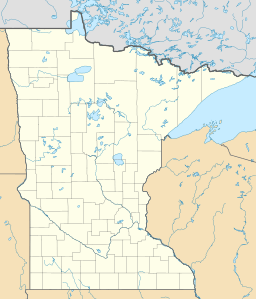Kabekona Lake facts for kids
Quick facts for kids Kabekona Lake |
|
|---|---|
| Location | Hubbard County, Minnesota |
| Coordinates | 47°09′44″N 94°45′50″W / 47.1622°N 94.7639°W |
| Basin countries | United States |
| Surface area | 2,252 acres (9 km2) |
| Max. depth | 133 ft (41 m) |
Kabekona Lake is a beautiful, clear lake in northern Minnesota, United States. It is located about 2.5 miles south of Laporte in Hubbard County. This lake is quite large, covering an area of about 2,252 acres (9.11 km2). It is also very deep, reaching a maximum depth of 133 feet (41 meters).
Kabekona Lake is special because it is the second clearest lake in all of Minnesota. Its waters are fed by natural springs, which helps keep them so clean.
What's in a Name?
The name Kabekona comes from the Ojibwe language. The Ojibwe people are a Native American group. In their language, Gabekana means "End of the Trail." This name was given to the lake to encourage people not to travel too far into the area.
Before it was called Kabekona Lake, it had another name: "Friendship Springs." This old name also suggests how inviting and pleasant the lake is.
Wildlife and Nature
Kabekona Lake is a great place to see different kinds of wildlife. It is especially known for its loons. Loons are beautiful water birds with striking black and white feathers. They are famous for their unique, haunting calls that echo across the water.
Fish in the Lake
Many types of fish live in Kabekona Lake, making it a popular spot for fishing. Some of the most common fish you can catch here include:
If you enjoy fishing, a well-known spot on the lake is called “Keay Point.” This area is named after a family who lives nearby and is considered one of the best places to cast a line.
Historical Importance
For a long time, people thought Kabekona Lake might be the true source of the mighty Mississippi River. The Mississippi River is one of the longest rivers in North America. While it was later discovered that the Mississippi River actually starts at Lake Itasca, Kabekona Lake's clear, spring-fed waters still make it a very important and beautiful part of Minnesota's natural landscape.


